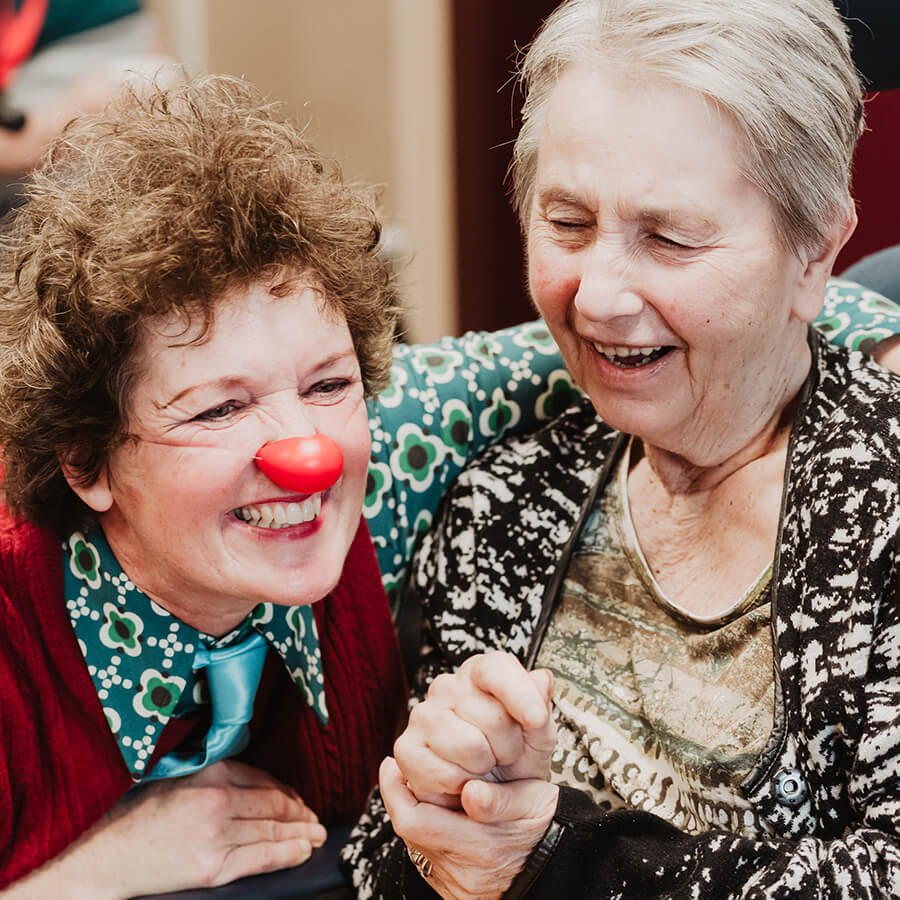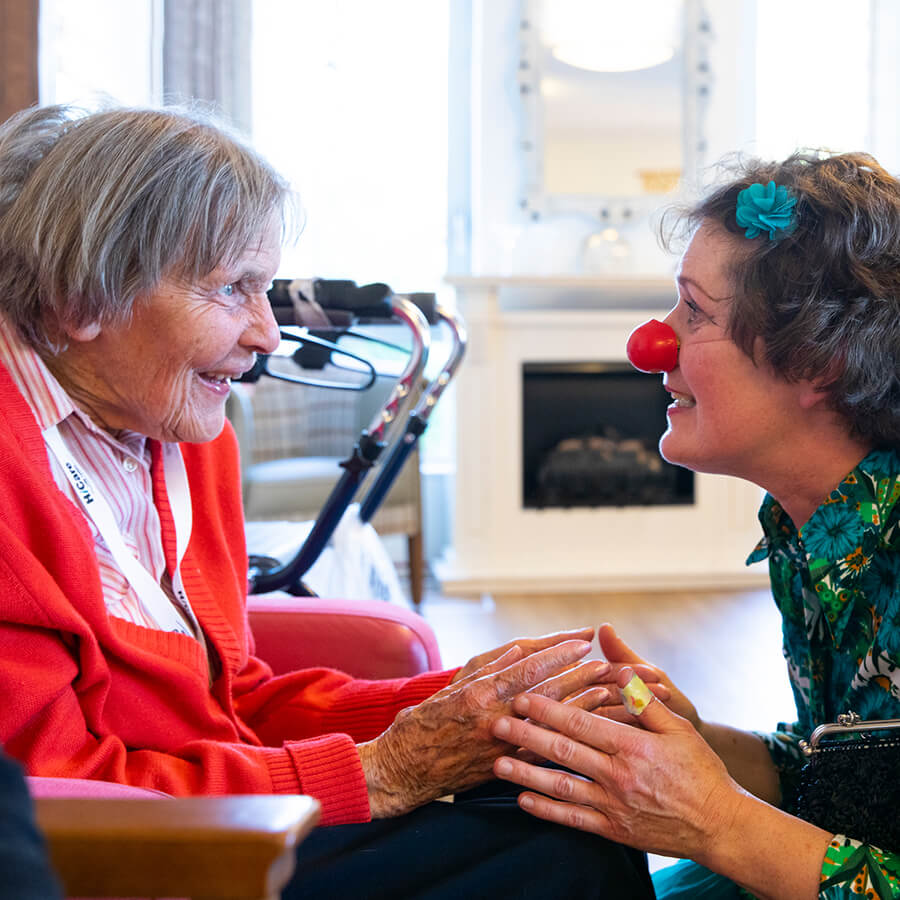Our
co-creators


©Ditta-van-Gent-fotografie
Our audiences and co-creators
People with dementia as well as children with Autism Spectrum Disorder (ASD), are often confronted with feelings of being left out, of not fitting into society or of failing to meet expectations of society. At times society can seem too loud, too quick, too inflexible for them.
But people with dementia as well as children with Autism Spectrum Disorder just want the same things that everybody wants. They want be seen, heard and be part of community.
The impact of art
Humour and the art of clowning are powerful tools to sensitively connect to those that feel socially disconnected.
Participatory, interactive and co-created performances, as we are seeking to develop with the ClowNexus project, offer the audiences possibilities for creative self-expression. This has a positive effect on their quality of life and emotional well-being.
Additionally, artistic activities provide opportunities for connection and exchange between people, thereby supporting the inclusion of marginalised or isolated groups and strengthening cohesion in our societies.
Read here about the scientific proof of the impact of art
Research and Learning

©Pallapupas

access to art
Access to art
Access to arts and culture is recognized as an integral part of the development of every human being and is a right of every one of us. This is also enshrined in the United Nations´ Conventions, as for example the UN Convention on the Rights of the Child or the Rights for people with disabilities.
But, too often, people with special needs face barriers to enjoy an active cultural life, may this be due to physical barriers to participate in mainstream culture or a lack of tailor-made approaches that take into account special needs, talents and wishes.
Connecting
through arts
Clowns never reduce their audiences to their conditions or circumstances. Instead, they choose to focus on, understand and commonly explore their special abilities, their powers and their gifts. The interactions are experienced and viewed as an enrichment for both sides.
In order for the artists to engage with children with ASD and people with dementia in meaningful ways, they first seek to learn more about how they experience the world, so they can develop a common understanding and joyful interactions.

©Stichting Cliniclowns-MAARTJE KUPERUS



